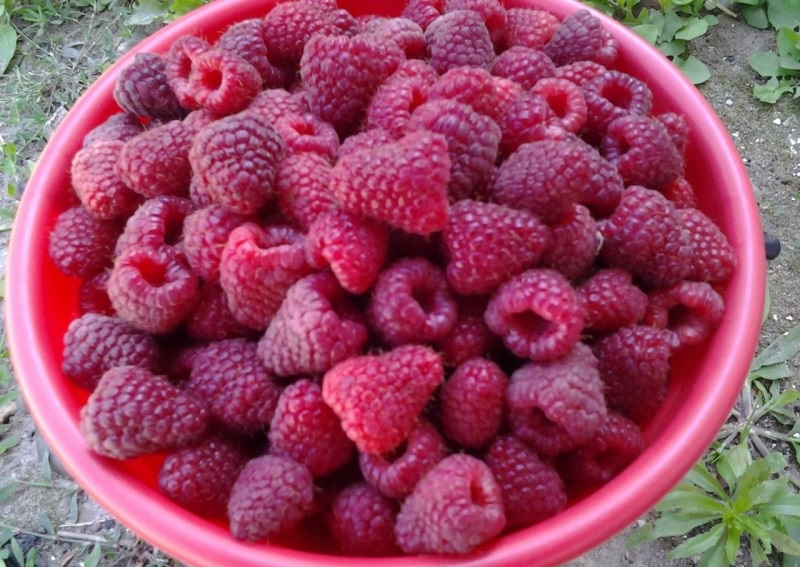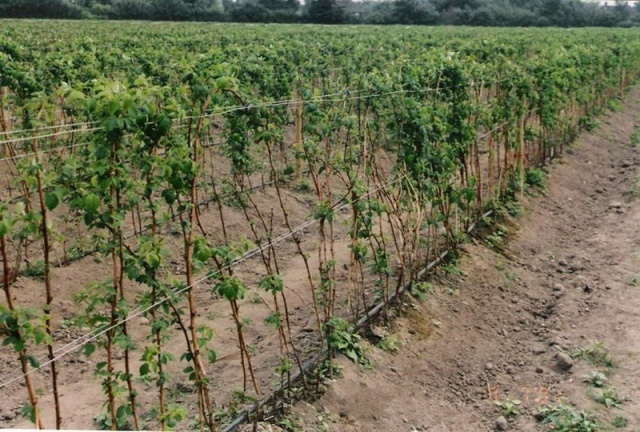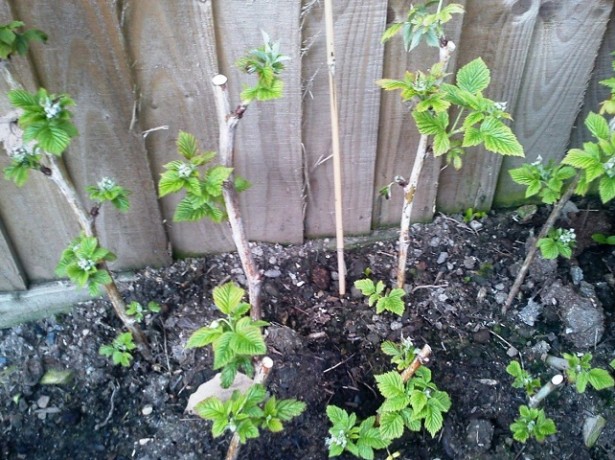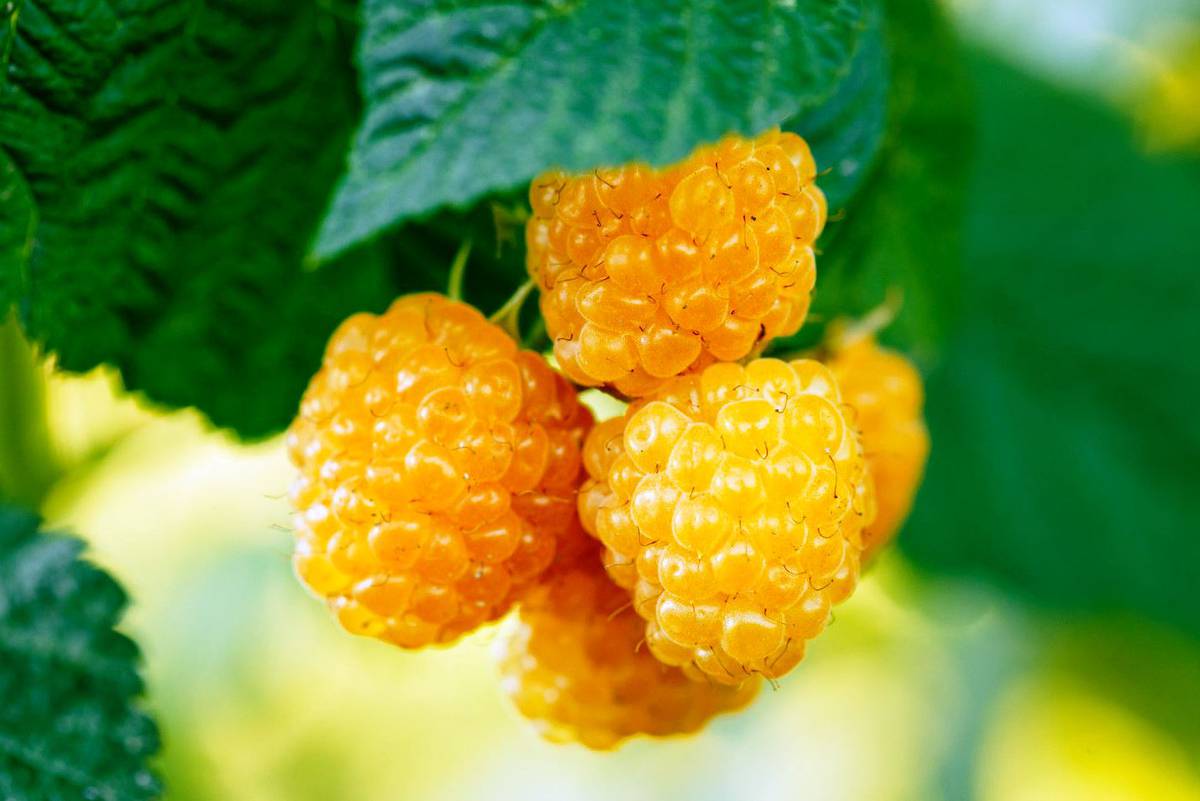Content:
When choosing seedlings for planting, some summer residents ignore this variety for the nondescript bushes. To appreciate the merits of Taganka raspberries, you should get to know them better. Due to the weak drupe, the berries are of little use for market turnover, but when grown for their own needs, the variety is able to compete with other remontants.
Features and characteristics
Raspberry remontant Taganka endows the summer resident with 2 harvests per year. Ripening of berries on last year's branches falls on 1-2 ten days of July, in young shoots - at the end of August. Under favorable conditions, the plant is capable of bearing fruit for a long time.
Additional Information. On average, gardeners make 4-5 harvesting visits per season. One bush gives up to 7 kg of fruit. But if you focus on one-time (later) fruiting when growing, you can achieve larger berries (up to 23 years) and increase productivity.
When making a description of the Taganka raspberry variety, the following plant features should be mentioned:
- spreading bushes reach a height of up to 2 m;
- thickening class - medium;
- up to 10 powerful replacement shoots and 4-5 lateral suckers are formed on the plant;
- young shoots are covered with a small waxy bloom, have internodes and by autumn acquire a dark brown tint;
- a lot of long, thickened fruit branches with 2-3 orders of branching, each of which forms an average of 30 berries;
- the fruits are large, weighing from 4 to 12 g, but, as mentioned above, this is not the limit;
- the conical shape of the berries immediately attracts attention - a beautiful, rich red shade casts a glossy shine;
- raspberries have a tightly knit drupe and juicy tender pulp;
- the variety has a well-expressed raspberry aroma and pleasantly sweet, with a slight sourness, taste;
- the variety is also distinguished by its large, dark green leaves - they are flat, corrugated, with grooved edges; the tips are colored brown.

Bountiful harvest
Raspberry Taganka attracts summer residents with soft spines that do not prick. They are located on the upper parts of the stems (although the lower ones are covered with hard spines). This provides a comfortable harvesting environment. The bush is able to withstand up to -30 degrees, but does not take root in the deep northern regions. Despite the frost resistance, the plant needs shelter.
Raspberry Variety Care
Any culture gratefully responds with high yields for attention to itself. Therefore, Taganka raspberries need to provide decent care and care should be started from the first moments: the choice of the site and the planting technique.
Note! In order for the seedlings to begin, they must be bought in specialized nurseries, which are rich in, for example, the Kuban Territory.
Site selection and preparation
When choosing a place for planting, they pay attention to the type of soil - it must be fertile, have a soft loose structure, the ability to absorb moisture and oxygen. The variety prefers an abundance of sun, but is afraid of drafts. Therefore, the southern and southeastern sides of fences, houses and courtyards are considered the best place to plant raspberries.
Important! Do not place the berry between the garden trees, which will give a lot of shade and affect the formation of fruits. In addition, tall individuals will choose all the nutrients from the soil for themselves, preventing raspberries from developing.
A place is prepared for Taganka, as for other varieties of raspberries. Free the site from last year's foliage, weeds, rhizomes and debris. If the soil is acidic, it is necessary to balance the pH level by scattering wood ash (1 l / m2) and organic matter (peat or humus - 2 buckets / m2) over the area. After that, the earth is dug up and loosened. These works are carried out one month before the planting of seedlings.
Landing
For Taganka, the best cultivation option is trench, when intervals of 1.5-2 m are made between the rows during planting, and the bushes are placed at a distance of 0.7-0.9 m.With the tape method, strong thickening of the berry is excluded, and the harvest more convenient to collect.

Linear fit
In addition to this method, summer residents use other options:
- squares with a side of 1-1.5 m are allocated for each bush; the plant is planted in the center of this rectangle;
- curtain planting implies the formation of berries in the summer cottage in small groups of 2-3 seedlings;
- sometimes Taganka is planted in the corners of a triangle, the length of the sides of which is 0.5 m.
In order for the plants to take root well, planting is carried out according to all the rules:
- the depth and width of the groove are equivalent (0.4-0.5 m), and the length is determined based on the number of seedlings;
- before planting the plants, a soil mixture containing fertilizers (per 1 square meter) - humus 10 g, potassium sulfate 120 g, superphosphate 200 g is added to the grooves to 1/3 of the depth;
- having moistened the roots with a clay talker, they are lowered into a trench and carefully straightened in it;
- covering the seedlings with earth, they try to make the root collar protrude 4-5 cm;
- having tamped the soil, add up to 10 liters of water under each bush;
- mulch with a layer of 7-10 cm with humus or peat.
Planting raspberries correctly means half the battle. Throughout the season, you will have to show maximum attention to get a good harvest.
Support
Since the main characteristic of tall raspberries is a high yield, the bushes need serious support. Several types of garters are offered for Taganka:
- trellis - along the raspberry tree, every 3 m, posts are driven in and several rows of wire are pulled over them; shoots on a trellis are distributed evenly, 6-8 branches for every 0.7 m of length;
- beam - the columns wedge into the bush; but this method is less effective and is rarely used, for individual individuals;
- fan - with it, the pillars are dug in between the bushes; part of the branches from one plant is attached to the support, part from another; it turns out that each bush is tied to 2 columns and looks like a fan.

Fan Garter Principle
On which option to stop, each gardener determines himself, based on the characteristics of the formation of the berry.
Watering
The cultivation of any crop is impossible without watering. If Taganka does not receive enough moisture, its fruits will be crushed and lose their sugar content. Therefore, during the period of ovaries and fruiting, watering should be regular, 2-3 times a week (more often in a dry hot season). But waterlogging should not be allowed - the plant will begin to hurt.
If it is possible to equip drip irrigation or use the sprinkling method, then this will be the best option for saturating the bushes with moisture. You can also make small grooves in the trenches, along which the water from the hose will be distributed. Include the supply of moisture in the evening and morning hours.
Top dressing
Raspberry variety Taganka needs feeding, which is carried out during the following periods:
- with the beginning of the growing season, it is recommended to use an infusion of cow or bird droppings;
- in June, when the bushes are blooming, mulching is carried out with peat or a mixture of straw with horse humus; mulch will make the soil looser and prevent moisture from evaporating;
- in the fall, after harvesting, a mixture of ammonium nitrate and humus is introduced under each bush.
Do not exclude fertilizing from agricultural technology, even if the soil is fertile enough. Although in the southern regions (such as the Kuban) they are trying to pay more attention not to fertilizers, but to the frequency of irrigation.
Trimming
The variety has no special requirements for this type of work - 2 pieces are enough.In the spring, sanitization of the bush is carried out with the removal of diseased, dry and frozen hemp. You should also remove excess growth so that the main branches have enough strength for fruiting. Autumn pruning is done when the plants are ready for winter.
Reproduction
Taganka is propagated in the same way as most remontant varieties - by offspring. To do this, select healthy bushes on the site, older than 2 years of age and giving large yields. They take those offspring that have grown 30 cm from the mother bush and have a lignified trunk.

Reproduction by offspring
This growth is cut off from an adult plant and, together with a clod of earth, is transferred to a new site. Despite the fact that the sprouts look small and weak, they take root very quickly and develop actively.
Preparing for winter
Taganka novice summer residents grow up as a biennial plant. Therefore, they have to take care of the safety of the bushes. Shoots are removed from the trellis, leave several powerful stems, tied together and bent to the ground. The rest of the branches and young shoots are cut at the root. The stems that remain overwinter are fixed with stakes so that they do not unbend, and they are wrapped.
If Taganka is used as an annual, then all shoots must be cut off, and the remaining short stumps are covered with mulch and spruce branches. In regions where there is enough snow, there is no need for additional shelter.












